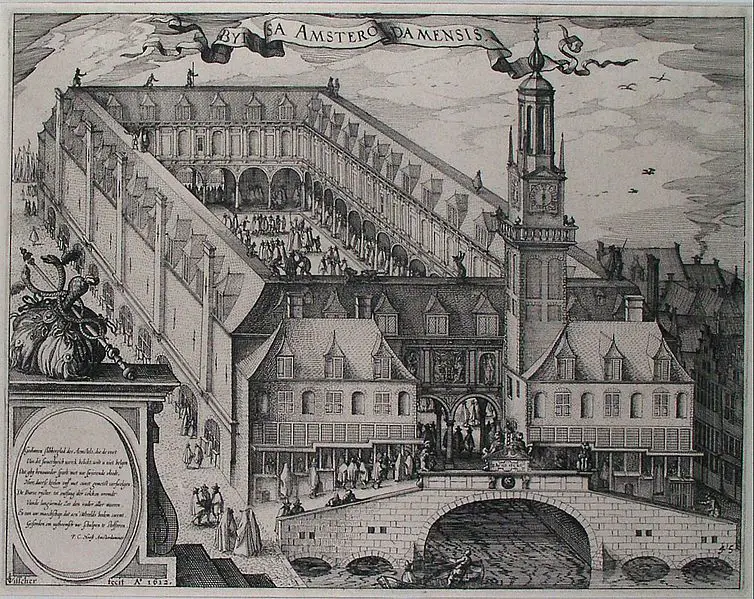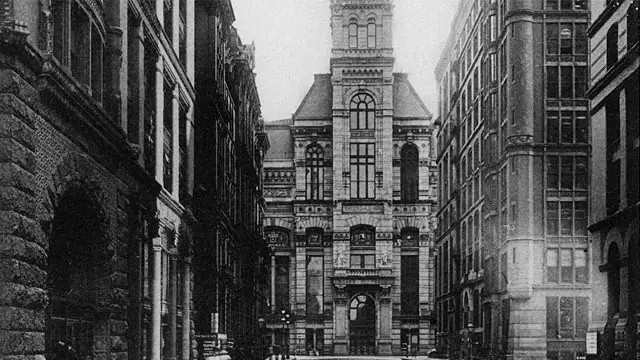Table of Contents
Over the entire history of the world, those living in each period often used trading to get the things that they wanted. In today’s society, this idea is still alive and well, though how this trading takes place has changed drastically. Most people use the money to purchase the things that they want. However, commodity trading is still alive and moving smoothly within the stock market.
Commodity trading refers to selling common goods and services that many people use. However, this trading does not mean that the actual products and services are being traded. Instead, it relates more to the worth of these goods and services. These are then used as a ruler to determine and regulate the costs of other things.
What is regarded as a commodity may be different from person to person or even country to country. Most commodity trading in any particular situation will consist of the most frequently used things in that area. For instance, livestock and crops will be involved in commodity trading in areas where farming is an integral part of life. Metals and energy are also usually considered commodities and can be traded.
History Of Commodity Trading
Historically, commodity trading has brought the most enormous fortunes universally. It originated centuries ago, even before the stock markets came into existence, albeit traded then differently than seen today on electronic exchanges. I have frequently cited, “If trading in the hypothetical markets, then Stocks & Equities is for boys, but Commodities is for men” (No gender bias intended). Wealth formation and creation is not a matter of chance. It is a process that needs adequate analysis & lots of work time.
But let us start from begin…
Commodity-based money and the early iterations of commodity markets are thought to have first appeared in Sumer between 4500 BC and 4000 BC, serving as a rudimentary economic system.
The commodity market goes back to 4500 BC when the Sumerians used clay tokens sealed in clay vessels for exchange. Claying writing tablets represented an amount of a given commodity. These tablets specified the time and date to deliver the merchandise. Primarily, tablets functioned like today’s future contracts. These times, they were defined as what would be a world-changing concept.
Before people could think of standardizing trade contracts, commodities such as seashells and pigs were commodities. Later on, silver and gold became the measures of exchange. Initially, the precious metal had its value based on beauty and association with royalty. As such, they came in handy when exchanging commodities or services. Ultimately, gold became money due to several factors. The scarcity, density, ease of melting, and measuring gold were some of the dominant aspects.
Commodity markets strengthened when their utility became evident when allocating resources across Europe. The distribution mechanism of goods, capital, land, and labor has a solid foundation in the commodity market. Additionally, the resourcefulness of this concept found life between the 11th and 13th centuries. The expansion and improvement of infrastructure, English urbanization, and the increasing use of coinage during these times were a picture of commercialization. Installing reliable scales in Sloten and Osdorp in 1466 paved the way for understanding the benefits of the commodity market. Essentially, the scales ensured no villager would need to travel to Harlem to weigh their local butter and cheese.
Amsterdam Stock Exchange and History of Commodities Trading

The first stock exchange, the Amsterdam Stock Exchange, was originally a market for commodity exchange. The only improvement was the use of sophisticated approaches, which are now modern tools. The market involved forward contracts, options, and short sales. The trade took place in the open air at Amsterdam Bourse. The invention of the fair took place in 1530, and the venue became a spectacle after being rebuilt in 1608. Commodity exchange is also a recent invention that has been practiced in very few cities.
In 1602, when the Dutch East India Company (VOC) was first established, there arose a need for stable banking facilities on a larger scale. Before this, several local establishments facilitated the exchange of commodities through asset valuation and trade regulation at a smaller scale, but a larger trading platform was not available. This is the time when the earliest Amsterdam Stock Exchange was born. It is often considered the oldest stock exchange in the world, and its business dealers first had some regulated trading and banking experiences. It all began when the VOC was awarded a 21-year charter for all Dutch trade in Asia by the Netherlands’ States-General.
Consequently, owing to the high business risk in Asia, the company provided stocks to many investors. These investors received a guarantee of a share of future profits gained by the VOC.
A secondary market soon evolved where the investors could sell some of their stocks through a regulated bookkeeper. This improved the investors’ confidence, and the trading market soon grew by leaps and bounds, now known as the Amsterdam securities market. After completing the 21-year charter in 1623, the VOC was initially supposed to distribute its profits to the shareholders per the original terms. By then, however, trading in Asia had increased, allowing the market to continue operating in the same regulated fashion. This was when the VOC was given a second charter for trade in the West Indies. However, this time, no clause was provided to expect the VOC to declare complete liquidation after the charter period. Instead, shareholders were given dividends from whatever profit the company made.
Thus, the trading market continued in full bloom and gave rise to the stock market as we know it. Since the 1600s, this stock exchange has changed several hands, and regulations have been modified. If we look at its history over the last and present centuries, we find governance and structural changes. For example, in 1997, the exchange merged with the European Operations Exchange (EOE), which gave rise to its present-day blue-chip index, ‘AEX.’ In terms of equity indexes, more than twenty Dutch companies currently trade on AEX, some prominent names being ING Group, Philips, Unilever, and Royal Dutch Shell.
The stock exchange had a significant merger with the Stock Exchanges of Brussels and Paris in the year 2000, bringing forth Euronext Amsterdam. For several years after that, Euronext thrived as Europe’s largest cash equities market and was also under the NYSE. In 2014, however, it was spun out as an independent entity.
Amsterdam’s stock exchange played a crucial role in shaping the modern-day stock and securities market through its eventful past. The successful dealings of multi-national company shares, giving rise to regulated bookkeeping, allowing investors to sell shares to third parties, and multiple investors being paid dividends are some characteristics that gave a distinct direction to the entire business world.
The Chicago Board of Trade History

The Chicago Board of Trade’s early history was a chaotic time. The Chicago Board of Trade, or CBOT, was established in 1948 in Chicago. ( The goal of CBOT was to bring structure and regulation to the Midwest’s budding grain market. The board offered “futures” to the farmers that would guarantee their selling price. The grain price was negotiated at planting time, and then the grain was sold for the agreed-upon price at harvest. This practice was mutually beneficial for both farmers and buyers. The farmers were guaranteed profits, and the buyers were assured of their needed supply. The Chicago Board of Trade began with 25 directors. The directors were from all walks of life, not just grain merchants.
The board standardized the grain market by specifying bushel sizes and identifying the different types of grains to be sold. The CBOT had a hard time gaining traction when it first began. Soon, Chicago became a booming town, growing throughout the 1850s. Chicago was connected to the railways during this time. Also, a canal was dug to connect Chicago to the Mississippi River.
These improvements to the city made Chicago a booming center for the Midwest’s agricultural commodities, creating exponential growth for the board. In 1856, the board experienced significant growth and grew to over 150 members. In 1859, the Chicago Board of Trade received its charter from the state of Illinois. With its new charter and sense of autonomy, the board could govern itself and set up rules and regulations.
They established their unique systems for grading grain and organizing the sales of grain futures. In 1865, CBOT moved to its first permanent location in the Chicago Chamber of Commerce Building. The Chicago Board of Trade dealt with many scandals in its early history.
Many traders tried to “corner” the market to control the prices and create more profit for themselves. Also, some people set up false fronts for futures trading called bucket shops. These shops would promise sales floor trading and not follow through. Rampant fraud and manipulation caused a public outcry and backlash against futures trading. This outcry went as far as the CBOT being called a “board of thieves.” Through all of this drama and scandal, the board somehow prospered and grew; they moved to their building. In 1914, World War I began. The CBOT attempted to set reasonable grain prices to keep the market moving steadily.
However, the US government asked the board to stop all futures trading. Futures trading stopped for three years during the war. Wheat prices plummeted when futures trading was re-established after the war over three years later. This was unforeseen, but Midwest officials were furious. This led to the national government setting the first federal control of futures trading. This was known as the Grain Futures Act of 1922. The Chicago Board of Trading had a rocky start but gained momentum and prosperity.

In conclusion, the Chicago Board of Trade (CBOT) provided the world’s oldest futures and options exchange for traders exchanging wheat, cattle, and pigs in the United States. Wheat producers came from the Midwest to sell their products to distributors and dealers. Only recently did other food commodities featured on the Commodity Exchange Act.
As a result, the CBOT traded rice, butter, Soybeans, and eggs in the 1930s and 1940s. The classical civilization boasts of a structure that allowed trading gold for spices or cloth that exhibited timelessness or high-quality standards. Commodity market history has a summation during the 19th century. During this time, it became apparent the importance of the commodity market was indispensable. Exchanges led to improved transportation due to better roads, innovation, and financing, which plays a significant role in international trade. While the commodity market became more substantial, there arose a need for regulation. As a result, reputation and clearance were the epitomai of influence. States that take advantage of managing these two characteristics have critical financial centers.
Major Commodity Markets
- Australian Stock Exchange (ASE)
- Energy
- Environmental
- Financial
- Agriculture
- BM&F Bovespa (Including the Brazilian Mercantile and Futures Exchange)
- Agriculture
- Financials
- Chicago Board of Trade (CBOT)
- Agriculture
- Livestock
- Chicago Mercantile Exchange (CME)
- Energy
- Precious metals
- Industrial metals
- Livestock
- Financials
- Korea Exchange (KRS)
- Financials
- Precious metals
- London Metal Exchange (LME)
- Industrial metals
- New York Board of Trade (NYBOT)
- Agriculture
- New York Mercantile Exchange (NYMEX)
- Energy
- Precious metals
- NYSE Euronext (ASE) (based in France)
- Energy
- Environmental
- Financial
- Agriculture
- Tokyo Commodities Exchange (TOCOM)
- Energy
- Precious metals
- Industrial metals
- Rubber
Tips on Commodity Trading
People are aware that commodity trading can be hazardous. They may earn a lot or lose their fortune with just one trading move. Those who rely on speculation only may put their financial and emotional well-being at very high risk. Although risk is always present in everything people do, including trading, there are ways to minimize it as much as possible. Traders can turn even the worst scenario into an advantage, especially if they can control their emotions despite their setbacks while trading.
While self-control is essential when trading, many people cannot do it. They tend to have the urge to predict what will happen in the market without a factual basis at times. However, they can improve their chances if they stick to their plans despite the odds. Traders have to be consistent in applying their strategies, and they are not supposed to depend on their “gut feeling” when making trade decisions. Following the trend carefully is one of the basics of commodity trading.
Another element involves cutting down on possible losses. Though losing some trades is expected, traders can minimize them using tested and efficient trading techniques. They can get used to accepting some losses, but it should help them be more careful not to lose all their money in the trading business. As much as possible, traders will have to see to it that they can keep down their losses to one percent only or up to five percent in the case of smaller trading accounts. People need to learn how to make use of their stop-loss orders at the right time so that they will be able to get out of trades that have hit loss limits.
There is a variation in the commodity market, and although traders may be using the same techniques, they have to be aware of these differences. Some commodities are more liquid, so traders must know the regular cycles that may occur over a given period. Trading commodities can also affect traders’ psychological well-being, especially when they experience extreme emotions like elation for winning trades or frustration over losses. It is essential that they can put their feelings in check because of the changing nature of the market, which could sway direction either for or against them.
























